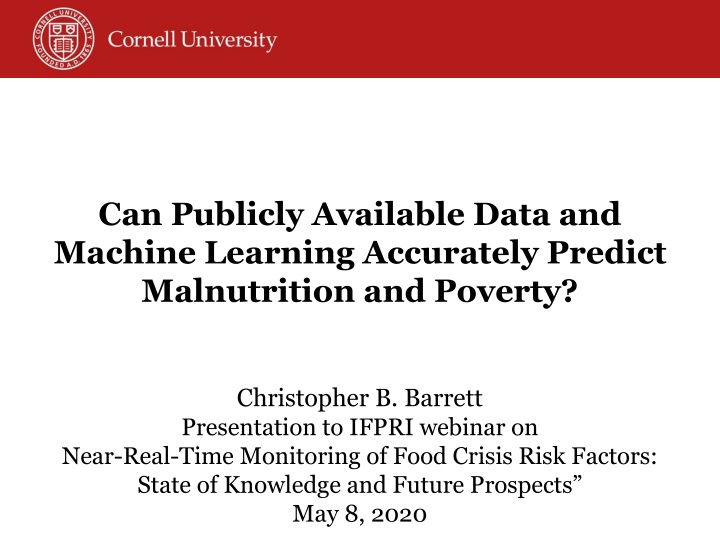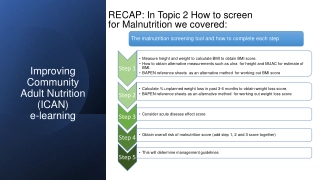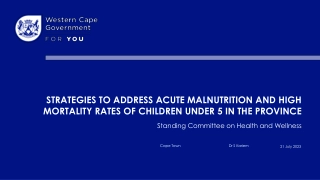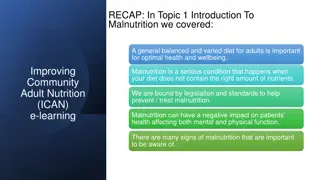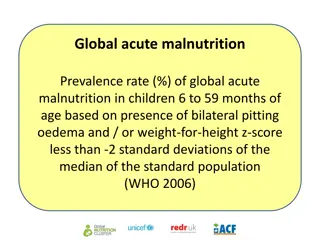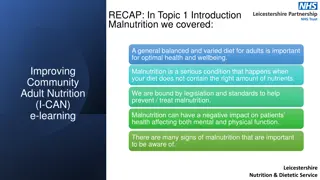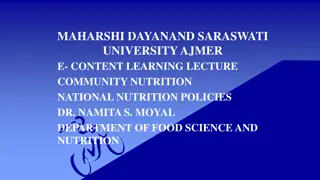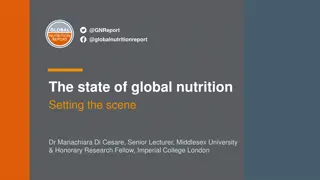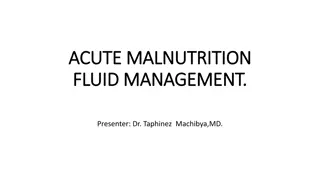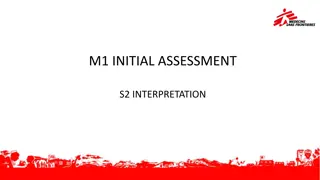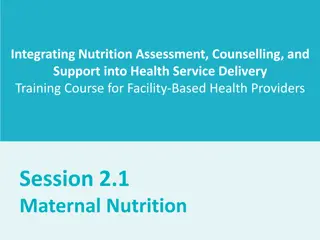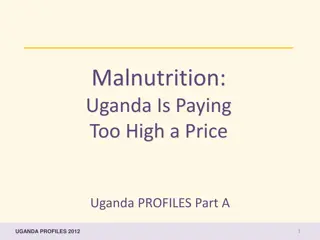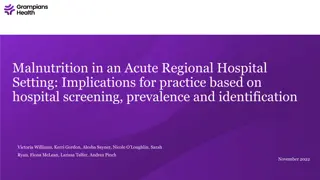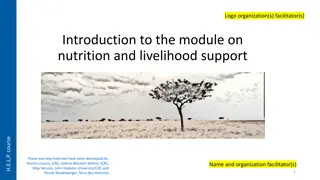Can Publicly Available Data and Machine Learning Predict Malnutrition and Poverty?
The presentation discusses using publicly available data and machine learning to predict malnutrition and poverty. Preliminary findings show promise but caution against over-optimism in predictions. Various methods like Random Forest, Gaussian Processes, and deep/transfer learning are explored. Tasks such as predicting asset poverty and child healthy weight-for-height are highlighted.
Download Presentation

Please find below an Image/Link to download the presentation.
The content on the website is provided AS IS for your information and personal use only. It may not be sold, licensed, or shared on other websites without obtaining consent from the author.If you encounter any issues during the download, it is possible that the publisher has removed the file from their server.
You are allowed to download the files provided on this website for personal or commercial use, subject to the condition that they are used lawfully. All files are the property of their respective owners.
The content on the website is provided AS IS for your information and personal use only. It may not be sold, licensed, or shared on other websites without obtaining consent from the author.
E N D
Presentation Transcript
Can Publicly Available Data and Machine Learning Accurately Predict Malnutrition and Poverty? Christopher B. Barrett Presentation to IFPRI webinar on Near-Real-Time Monitoring of Food Crisis Risk Factors: State of Knowledge and Future Prospects May 8, 2020
Can Publicly Available Data and Machine Learning Accurately Predict Malnutrition and Poverty? PIs: Ying Sun, David Matteson, Chris Barrett (Cornell), Leiqiu Hu (Alabama), Yanyan Liu (IFPRI), Linden McBride (St. Mary s) with Chris Browne and Jiaming Wen Our project: A USAID-funded, multi-disciplinary effort to generate new data products (SIF, LST) and use those and other publicly-available data and cutting-edge ML methods to predict FtF poverty and malnutrition indicators at high spatial resolution. Can cheaper, higher frequency, accurate estimates supplement (or replace?!?) large-scale survey-based ones?
Can Publicly Available Data and Machine Learning Accurately Predict Malnutrition and Poverty? Our preliminary findings: Promising, but beware of over-optimism. Data: Geography, veg growth and market price feature sets are key overall, w/ some cross-country variation
Can Publicly Available Data and Machine Learning Accurately Predict Malnutrition and Poverty? Methods: Simpler RF+GP do ~ as well as more complex deep/transfer learning. GP to exploit covariances significantly improves OOS fit, esp. for hard-to-predict malnutrition indicators, but doesn t change prevalence estimates much. Tasks: Easier to predict asset poverty and child healthy WHZ.
Thank you Thank you for your interest Comments/questions?
